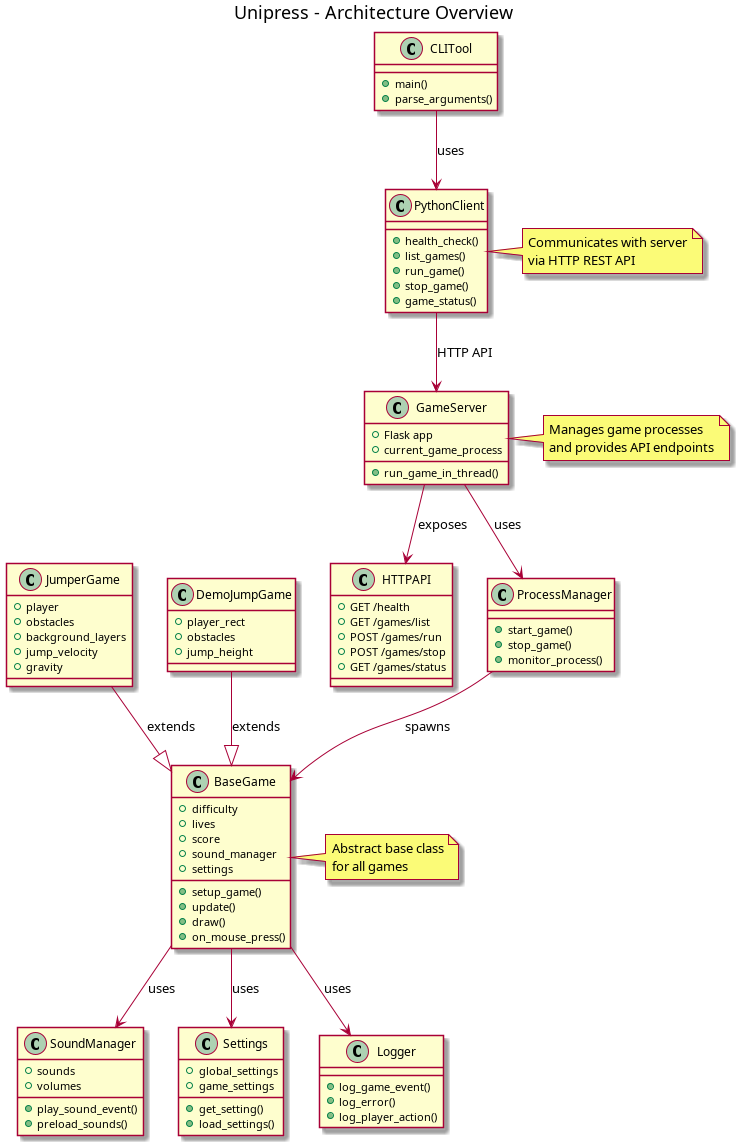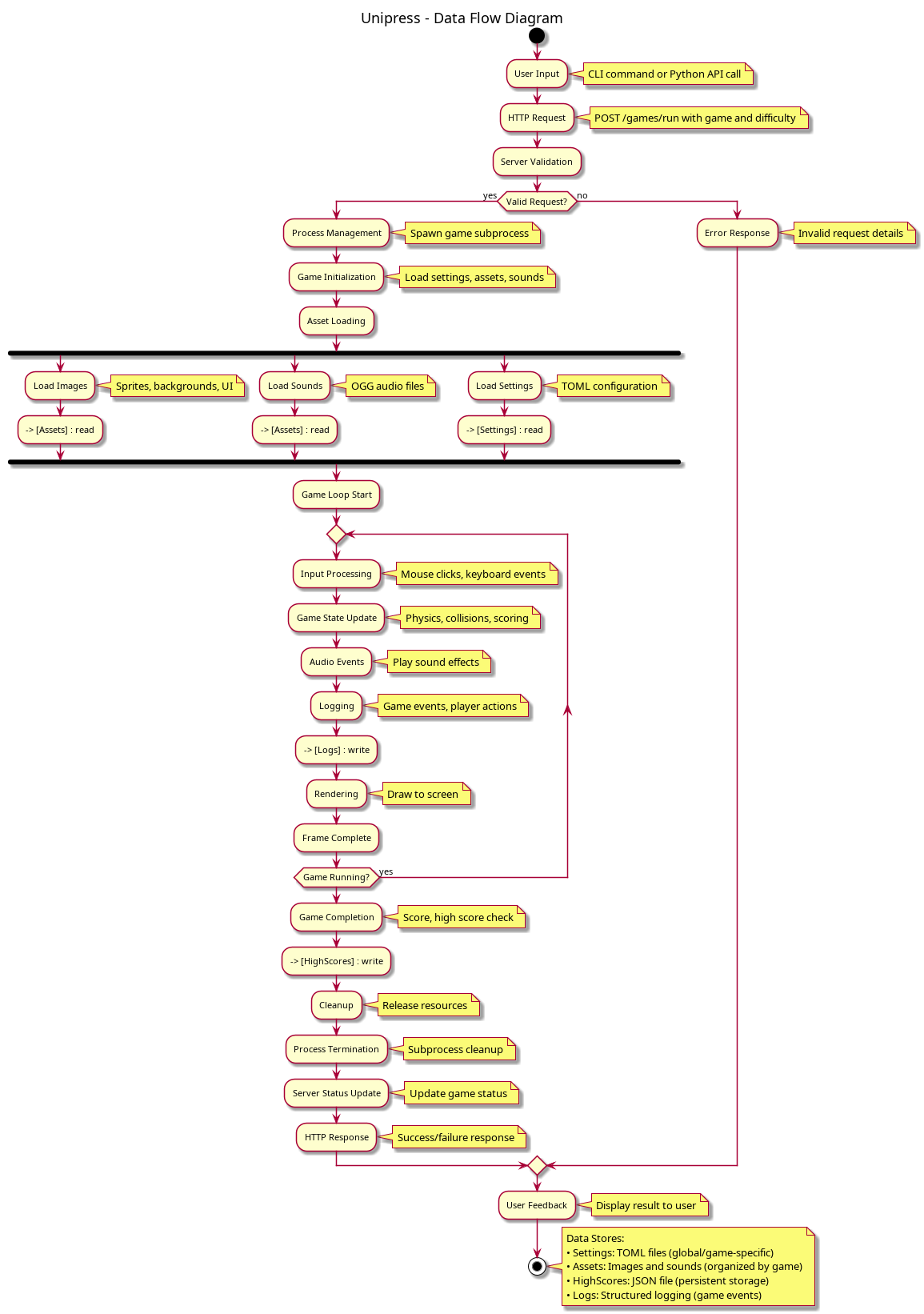System Architecture Overview
Introduction
Unipress is designed as a modular, extensible framework for one-button games. The architecture follows modern Python development practices with clear separation of concerns, comprehensive configuration management, and robust asset handling.
High-Level Architecture
The system consists of several key components:
Core Framework
BaseGame: Abstract base class providing common game functionality
AssetManager: Centralized resource management for sprites, sounds, and animations
SoundManager: Event-driven audio system with OGG format support
SettingsManager: Hierarchical TOML-based configuration system
Logger: Structured JSON logging with Loguru
Game Layer
Game Implementations: Concrete game classes extending BaseGame
Game Server: HTTP API for game management within containers
High Scores: Persistent score tracking with JSON storage
Infrastructure
Containerization: Docker with multi-stage builds and X11/audio passthrough
CI/CD: GitHub Actions for automated testing and deployment
Documentation: Sphinx with Read the Docs and GitHub Pages hosting
Component Relationships
 *High-level system architecture showing component relationships - [Click to enlarge](../_static/ArchitectureOverview.png)*
*High-level system architecture showing component relationships - [Click to enlarge](../_static/ArchitectureOverview.png)*
Detailed Architecture
The system follows a layered architecture with clear separation of concerns:
graph TB
A[Main Entry Point] --> B[BaseGame]
B --> C[AssetManager]
B --> D[SoundManager]
B --> E[SettingsManager]
B --> F[Logger]
G[Game Implementations] --> B
H[Game Server] --> B
I[Container Runtime] --> G
I --> H
J[CI/CD Pipeline] --> K[Documentation]
J --> L[Testing]
Key Design Principles
2. Modularity
Each component is designed to be independent and replaceable. The BaseGame class provides a common interface while allowing for game-specific implementations.
3. Configuration-Driven
Settings are hierarchical and TOML-based, allowing for easy customization without code changes.
4. Asset Management
Centralized asset handling with JSON metadata for animations and structured organization by game and type.
5. Container-Ready
Full Docker support with proper audio and display passthrough for seamless deployment.
Technology Stack
Language: Python 3.12+
Game Framework: Arcade
Package Manager: uv
Configuration: TOML
Logging: Loguru (JSON format)
Audio: OGG format with event-driven system
Containerization: Docker with docker-compose
CI/CD: GitHub Actions
Documentation: Sphinx with Myst-Parser
Hosting: Read the Docs + GitHub Pages
Directory Structure
unipress/
├── core/ # Core framework components
├── games/ # Game implementations
├── assets/ # Centralized asset management
├── locales/ # Internationalization
├── ui/ # User interface components
├── docs/ # Documentation and ADRs
└── tests/ # Test suite
Data Flow
 *Data flow through the system components - [Click to enlarge](../_static/DataFlow.png)*
*Data flow through the system components - [Click to enlarge](../_static/DataFlow.png)*
Initialization: Settings loaded, assets initialized, sound system started
Game Loop: Event handling, state updates, rendering, audio processing
State Management: Score tracking, lives system, game progression
Persistence: High scores saved, settings updated, logs written
Security Considerations
Container isolation for game execution
Input validation and sanitization
Secure configuration management
Audit logging for debugging and monitoring
Performance Characteristics
60 FPS target for smooth gameplay
Efficient asset loading and caching
Minimal memory footprint
Fast startup times for containerized deployment
Extensibility
The architecture is designed for easy extension:
New Games: Implement BaseGame interface
New Assets: Follow established naming conventions
New Features: Extend core components without breaking existing games
New Platforms: Container-based deployment supports multiple environments